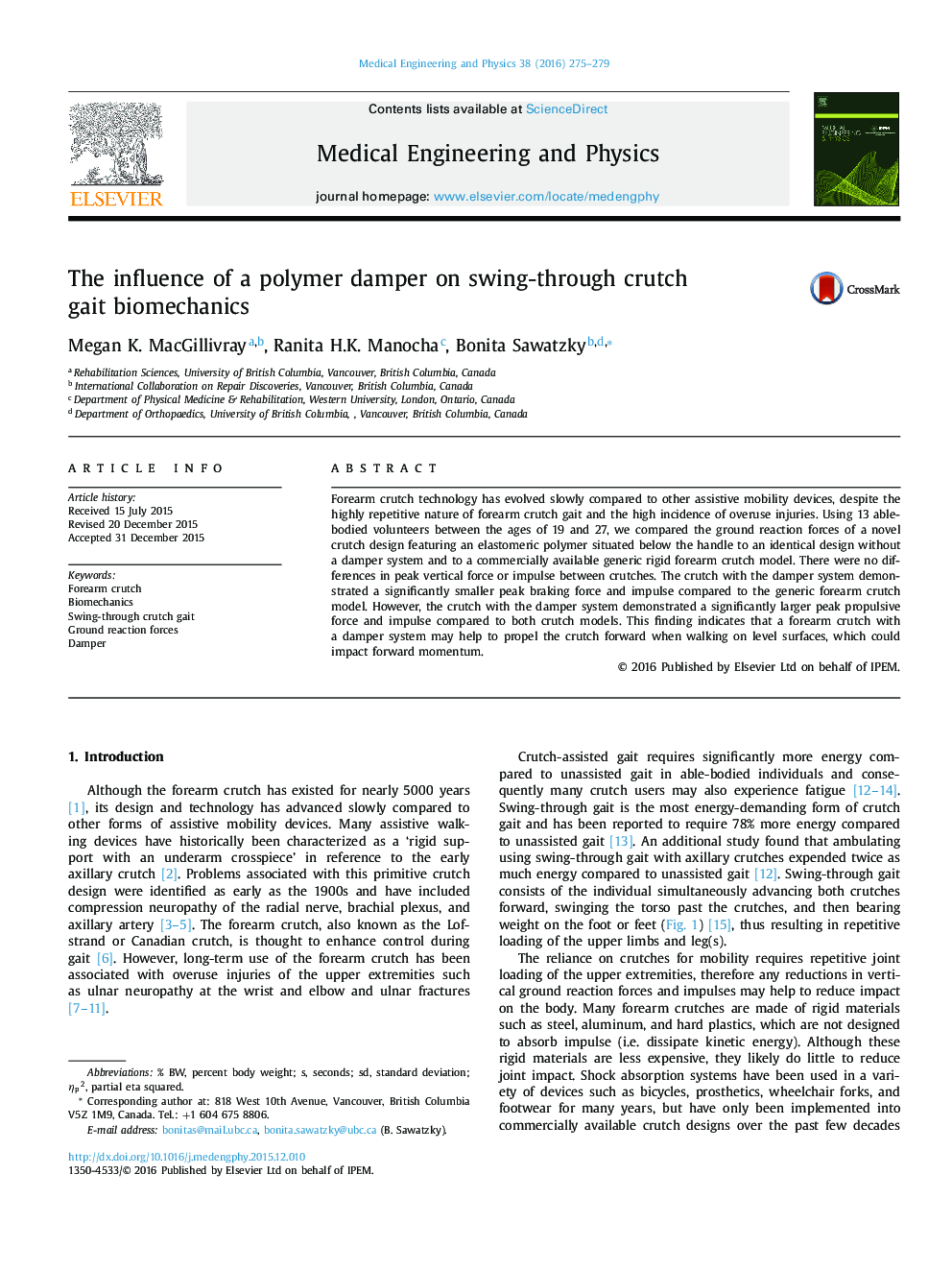| کد مقاله | کد نشریه | سال انتشار | مقاله انگلیسی | نسخه تمام متن |
|---|---|---|---|---|
| 875734 | 910798 | 2016 | 5 صفحه PDF | دانلود رایگان |
• A crutch design with an elastomeric polymer (damper system) situated below the handle was examined.
• The damper system did not appear to have an effect on peak vertical force or impulse.
• The crutch with the damper system demonstrated smaller peak braking force and impulse compared to a rigid generic crutch.
• The crutch with the damper system demonstrated larger peak propulsive force and impulse compared to the rigid generic crutch and to the identical crutch without a damper system.
• A damper system may help to propel the crutch forward when walking on level surfaces.
Forearm crutch technology has evolved slowly compared to other assistive mobility devices, despite the highly repetitive nature of forearm crutch gait and the high incidence of overuse injuries. Using 13 able-bodied volunteers between the ages of 19 and 27, we compared the ground reaction forces of a novel crutch design featuring an elastomeric polymer situated below the handle to an identical design without a damper system and to a commercially available generic rigid forearm crutch model. There were no differences in peak vertical force or impulse between crutches. The crutch with the damper system demonstrated a significantly smaller peak braking force and impulse compared to the generic forearm crutch model. However, the crutch with the damper system demonstrated a significantly larger peak propulsive force and impulse compared to both crutch models. This finding indicates that a forearm crutch with a damper system may help to propel the crutch forward when walking on level surfaces, which could impact forward momentum.
Journal: Medical Engineering & Physics - Volume 38, Issue 3, March 2016, Pages 275–279
